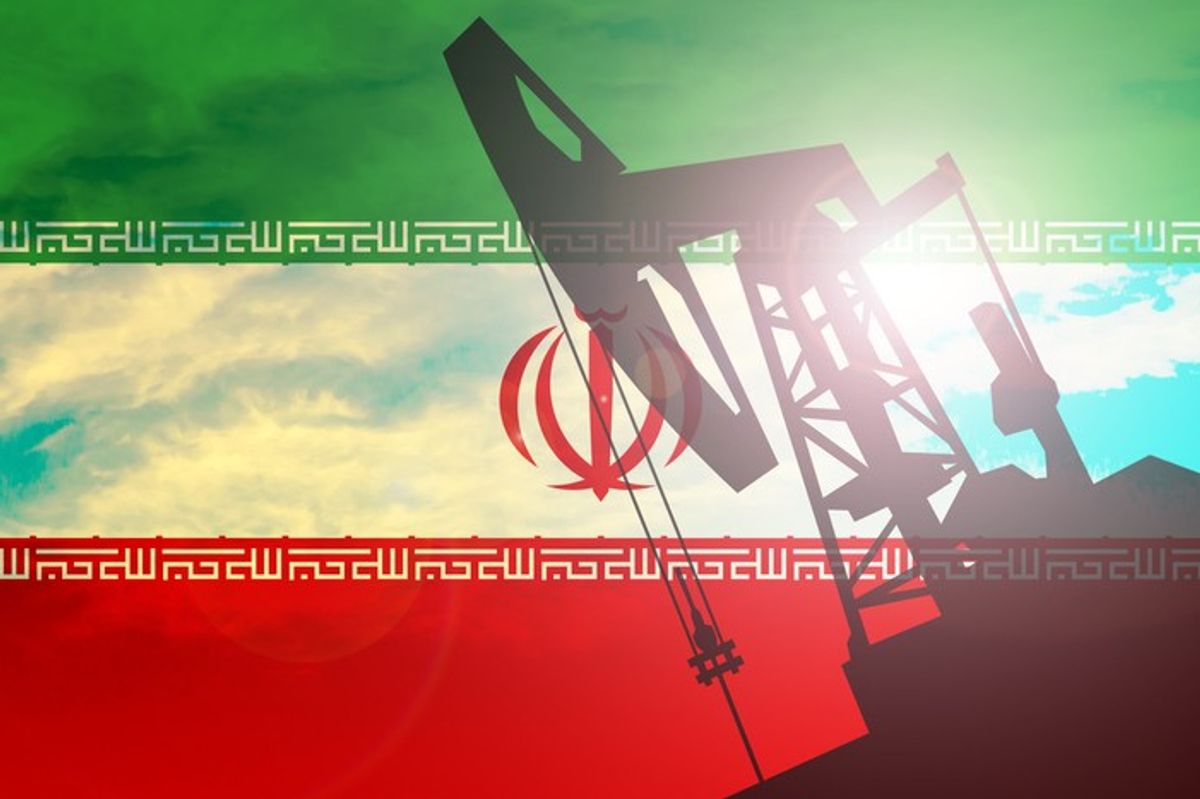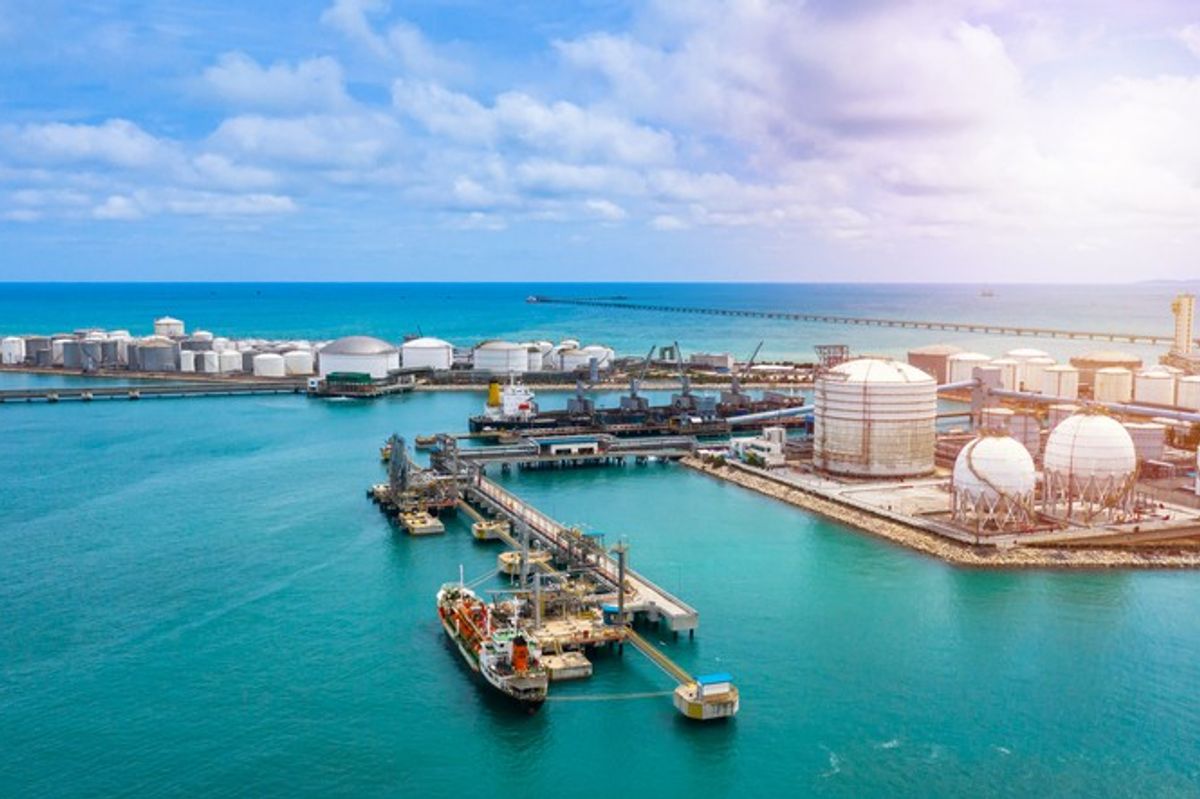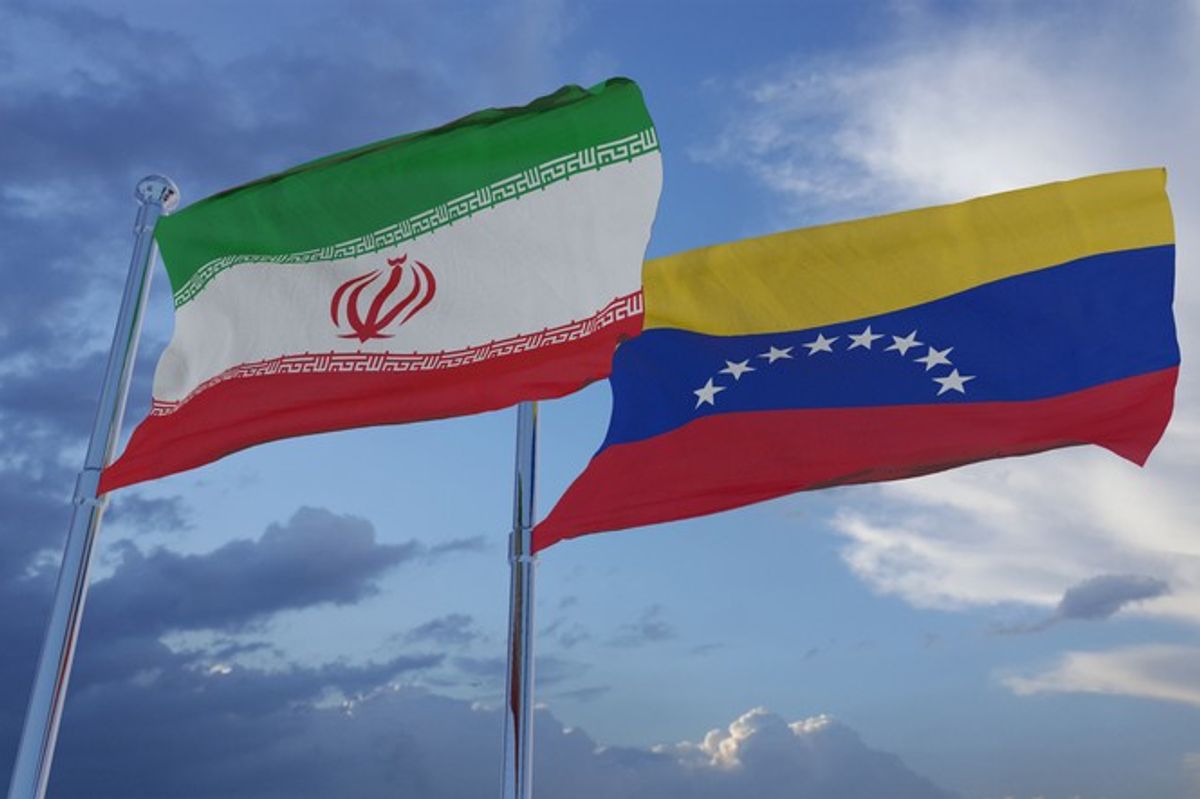In November 2014, the thirteen members of the Organization for Petroleum Exporting Countries (OPEC) shocked oil markets by announcing that, in order to “restore market equilibrium,” they would not reduce production to counteract swiftly falling prices. Today, a year and a half later, prices remain less than half their 2014 peaks, and OPEC has still failed to negotiate even a production freeze agreement.
David Goldwyn, the President of Goldwyn Global Strategies and the Chairman of the Atlantic Council’s Energy Advisory Board, told The Cipher Brief that, what’s really behind OPEC’s (and specifically Saudi Arabia’s) inability to make a deal is a mixture of politics and economics, the combination of which make any future production agreements difficult to negotiate.
The Cipher Brief: Crude prices have remained relatively steady despite the failure of OPEC and other major producers to reach a production freeze agreement in Doha on April 16. To begin, can you just paint a picture of global petroleum markets as you see them today and tell us why you think prices are holding steady?
David Goldwyn: Over the past few months, we’ve seen a fair amount of volatility in the oil markets, with prices fluctuating in more or less a ten-dollar range. We’re seeing a definite fall off in supply, particularly an almost 800 thousand barrels per day (bpd) decrease in the onshore U.S. production year on year, although some of that has been offset by an increase in Gulf of Mexico production. We’ve also seen an increase in demand, both in the U.S. and the developing world, as a result of lower crude and petroleum prices, so that has had upward pressure on the oil price.
But the volatility comes from the fact that we have seen some of the disrupted oil supply come back on line, such as resumed oil production in Iraq and a potential for increased production in Libya, while we’ve seen other production decline, like the brief strike that we saw in Kuwait, new outages in Nigeria, or the risk of an even larger decline in supply from Venezuela. It’s this uncertainty about whether there will be a disruption in supply or a pickup in demand, as well as expectations about whether there will or won’t be a production cut, that causes prices to bounce around. My expectation is that we will continue to see production fall off and demand strengthen, but we will not be looking at a production cut from OPEC any time in the next year.
TCB: You mentioned that alleviated supply in places like Libya and Iraq have created uncertainty. Specifically, what effect do you think the reentry of Iran will have on international oil markets?
DG: Iran increased its production by about 300 thousand bpd after the implementation of the Joint Comprehensive Plan of Action (JCPOA) agreement. It will be hard for Iran to have significantly increased production until the framework for investing becomes clear, until actual investment takes place, and until there is much more clarity on how non-U.S. companies can navigate U.S. sanctions and invest in Iran without inadvertently partnering with a prohibited entity like Iran’s Revolutionary Guard. So I think Iran’s return will be slow. It’s obviously had downward pressure on prices because of increased supply, but it seems people now realize that Iran is not coming back in a big way very soon, so I think that will be an incremental factor but not a game changer.
TCB: Has there been any significant interest from International Oil Companies (IOCs) in investment in Iran yet?
DG: I think a lot of people have looked, but there has not been much action. On the oil side, that’s because the final terms of Iran’s new production contract are just becoming public, so it’s not clear what the terms will be. On the gas side, I think you’ve seen interest from Total and a bit from Shell, but the reality is that it is very hard to use the U.S. financial system, and it’s very hard to do enough due diligence on your potential Iranian partner without risking falling afoul of U.S. sanctions. I think that’s going to make the interest of IOCs in Iran quite modest, and I think it’s going to make actual investment very slow.
TCB: With that in mind, how do you judge the failure of talks in Doha? Was the question of Iranian production really the driving factor behind the collapse of a production freeze agreement?
DG: The failure in Doha was not a surprise. The only deal that was ever on the table was a freeze, which would allow all of OPEC’s producers to continue producing at these very high levels that they have been maintaining for the past year or so. It was never going to be in the interest of the Gulf producers to have even this high level of a freeze without Iran agreeing to a freeze at some level and, when Iran elected to not even send a representative to the meeting, that was a pretty clear indicator that this was not going to happen.
What’s really behind Saudi reticence towards a freeze is a combination of politics and economics. The politics is that they really do not have any interest in strengthening the Iranian economy while they see Iran as their primary threat and as a supporter of proxy wars in both Syria and Yemen. Until there is some comfort that this Iranian threat will be diminished, then their motivation is going to be to inhibit Iran’s economy as much as possible. The economic piece of it is that, when it comes to who will have the greatest market share in the developing Asia market, which is the only growing market for oil over the next 20 years or so, the real competition for Saudi Arabia is Iran and Iraq, and to some extent Russia as well. Starting as early as 2014, it was Russia who supplanted Saudi Arabia as the primary supplier to China and the rest of the Asian markets, while Iran took back market share once it was allowed to increase production under the JPOA. So this question of how will they allocate or how will they share that market is a serious economic question for Saudi Arabia and a hard one for them to resolve.
To my mind, the Saudis are overreaching a bit in economic terms, because they took Iran and Iraq’s market share when those countries were either under sanction or enduring civil conflict (in the case of Iraq). So they have kept what they took, and now they just want to talk about how to share what incremental growth may lie ahead. So, not quite fair on the part of the Saudis not to make room for their fellow Gulf producers, but how they split that baby is really the core economic question. And without a resolution on the politics, Saudi Arabia is in no hurry to resolve it. It’s important to keep in mind that their lifting cost – the cost of producing oil once drilling is complete – is between three and six dollars a barrel, so they are still generating positive cash flow, even if they are generating far less of it than when prices were at 80 and 100 dollars.
TCB: How does U.S. production fit into this equation? Riyadh’s original decision to maintain high levels of production after oil prices dropped in 2014 has most commonly been painted as a fight for market share against U.S. shale producers. Is this view correct in your opinion?
DG: The U.S., of course, has only recently been permitted to export crude oil to locations other than Canadian refineries, so we are not really a competitor for market share of any significance on the global market. But U.S. production as a whole has displaced the need for imports, primarily of light oil, into the U.S. market and that has displaced a lot of Middle Eastern and African crudes and flooded the market elsewhere. So we have an increased global supply at depressed prices, which has made the competition for remaining oil markets much more intense. Saudi Arabia had an interest in cooling off U.S. production and probably delaying the day when we see significant exports, as a way of supporting price and preserving market share. But I think the Saudis realize that it will be hard to keep U.S. shale down for long. I think they were surprised by how resilient U.S. production was, as prices declined, and I think they now appreciate that we have very elastic supply or, in other words, the time between when a U.S. independent drills a well and is able to produce it is a matter of months, as opposed to a deep water production or heavy oil production, which is a matter of years. When the price comes back, U.S. production could increase, in the view of some experts, by almost a million bbd in one year, assuming that the crews are available to help with that production. I think Saudi Arabia understands that U.S. production is going to put a cap on oil prices, so their real target is to try to push out the high cost oil, which is ultra-deep water and very complex oil. And, in that respect, they’re succeeding.
TCB: You’ve previously mentioned $50-60 per barrel as a possible price target for Riyadh. Can you talk a bit more about that target and the ability of the Saudi government to absorb the budget requirements of a low-price environment compared to other oil-producing nations?
DG: For Saudi Arabia, and in fact all the Gulf producers, a price target of around $50-60 in today’s money is a zone where they may see some revival of U.S. production, but they will still be able to keep the very high cost production out. That will enable them to have greater market share and satisfactory cash flow over a long period of time, so for them that is really the Goldilocks scenario.
It’s important to distinguish between whether a producer generates positive cash flow and whether they generate enough money to meet their spending targets. The Gulf producers have very low lifting costs (Saudi Arabia is in the $3-6 range), so even at $30 or $35 oil they are generating a positive cash flow. The challenge they have is that they have previously set their government budget targets, their spending targets, at levels which required anywhere between $80 and $120 oil to balance their budgets, and this is forcing very significant economic dislocation in every single-source oil producing economy, especially in the Gulf. They’re having to cut subsidies for petrol and electricity, they’re going to have to limit the number of government jobs that are available, they’re going to have to consider diversifying their investments into other areas in order to generate more positive returns, and the ability of a producer to withstand this huge cut in their national income depends on whether they have significant foreign exchange reserves and whether they have a social fabric that can withstand the pressure.
TCB: How do you feel that the Saudis and other wealthy Gulf producers are placed to effectively survive this period versus more exposed oil-producing economies like Venezuela?
DG: Saudi Arabia is the best positioned of any country, because it still has very significant foreign exchange reserves, so it can burn down its budget by $100 billion a year and still have a decent amount of cash, although the IMF says they can maybe do that for about five years and then even they are going to run out. So the Saudis can afford to play this game of chicken, with Iran and Iraq in particular, but this is why you’re also seeing them borrow on the public markets, consider a flotation of Aramco, and try to restructure their economy.
The Northern Gulf producers have no such flexibility. They do not have the same level of foreign exchange reserves and, in a country like Iraq, a budget cut means they’re either going to have to further hollow out their quite fragile army, which is trying to fight ISIS, or will they will delay things like reconstruction of the electrical grid and provision of basic services to their citizens, or anything that resembles a social safety net. So they are much more fragile and, when you look around the rest of the world, this is why Venezuela is on the brink of default, why Brazil is suffering negative GDP growth and a risk of default on Petrobras’ debt as well, and why you have such panic in places like Nigeria and Angola, where governments are going to the IMF for loans just to keep their governing budgets afloat.
TCB: And Russia specifically? Do they have the flexibility to make the budget changes necessary to survive?
DG: Russia has managed to adapt over the last year and a half by lowering its cost of production due to a significant depreciation in the ruble. A lot of their services and production are priced in rubles, and so they have managed to lower their costs and increase production. They’ve also lowered their export taxes, which is a way of making their products more competitive by essentially lowering the price, so they have been able to compete aggressively for market share in Asia.
But Moscow is pretty much at the end of this string and, given that the Russian government’s budget is so greatly dependent on oil for income, much more than it is on gas, they are being squeezed enormously. This is why you’re seeing them require an almost 50 percent. dividend from Rosneft and their other national champions, and also why you’re seeing Rosneft and some of the other Russian majors selling equity shares to China. They are in a desperate mode to maintain enough cash to sustain production. I think the reality is that their production is going to flatline due to low prices, U.S. sanctions, and a very high-risk internal environment, and that cash squeeze is going to pinch as they have to really start cutting back on services. When there’s not enough largesse for Putin to hand out, either to his comrades or to keep the social safety net robust, then the basis for his popularity could suffer significantly.
TCB: Could you speak more about what the aftermath of a production freeze or a production reduction would look like in practice? What would the immediate price effect be and how long would it take to burn off current oil inventories?
DG: It’s important to keep in mind that we only have an overhang of about a million and a half to two million bbd in today’s market, with still very low spare capacity. And a significant disruption in a major country could make that overhang evaporate very quickly. So, combined with low spare capacity, that could have a very significant impact on prices quickly. Inventories are at record high levels, and it would probably take about a year to burn those off if there were a production cut or a significant disruption. But the market would see the delay in investment that’s happened over the last couple years, the fearfulness of investors to go back into exploration, and we would see the futures price of oil rise more swiftly then the burn-off of those inventories. If you had a significant production cut or disruption, you could see prices revive to $50-60 in probably a matter of days. And I think a year and a half or so afterwards we could be back at $80 oil. A lot depends on whether Gulf producers really are at their maximum levels of production or not, and which major producers, like a Venezuela or a Nigeria, may see significant setbacks in production, and how quickly U.S. shale revives.
TCB: And your personal prediction for the next 3-5 years?
DG: With the caution that I have no success record or skill at predicting oil prices, I would say that certainly five years from now we will easily be back at $80 oil, if not sooner. And the reason for that is, first, we will see a supply lag because of the fall off of investment over the last 18 months, and what’s likely to be the next 18 months as well. Second, I think we are probably seeing the end of the economic policies of austerity, both in the U.S. and Europe, as the failure of those policies becomes more visible and the risks to the social fabric become more urgent. Accordingly, I think we will be seeing different levels of stimulus as well. With a lag in supply and probably an increase in demand, and no change in the transportation paradigm – so still needing oil to produce transportation fuel – all of that to me spells another price boom easily within the next five years and possibly within the next three.
















